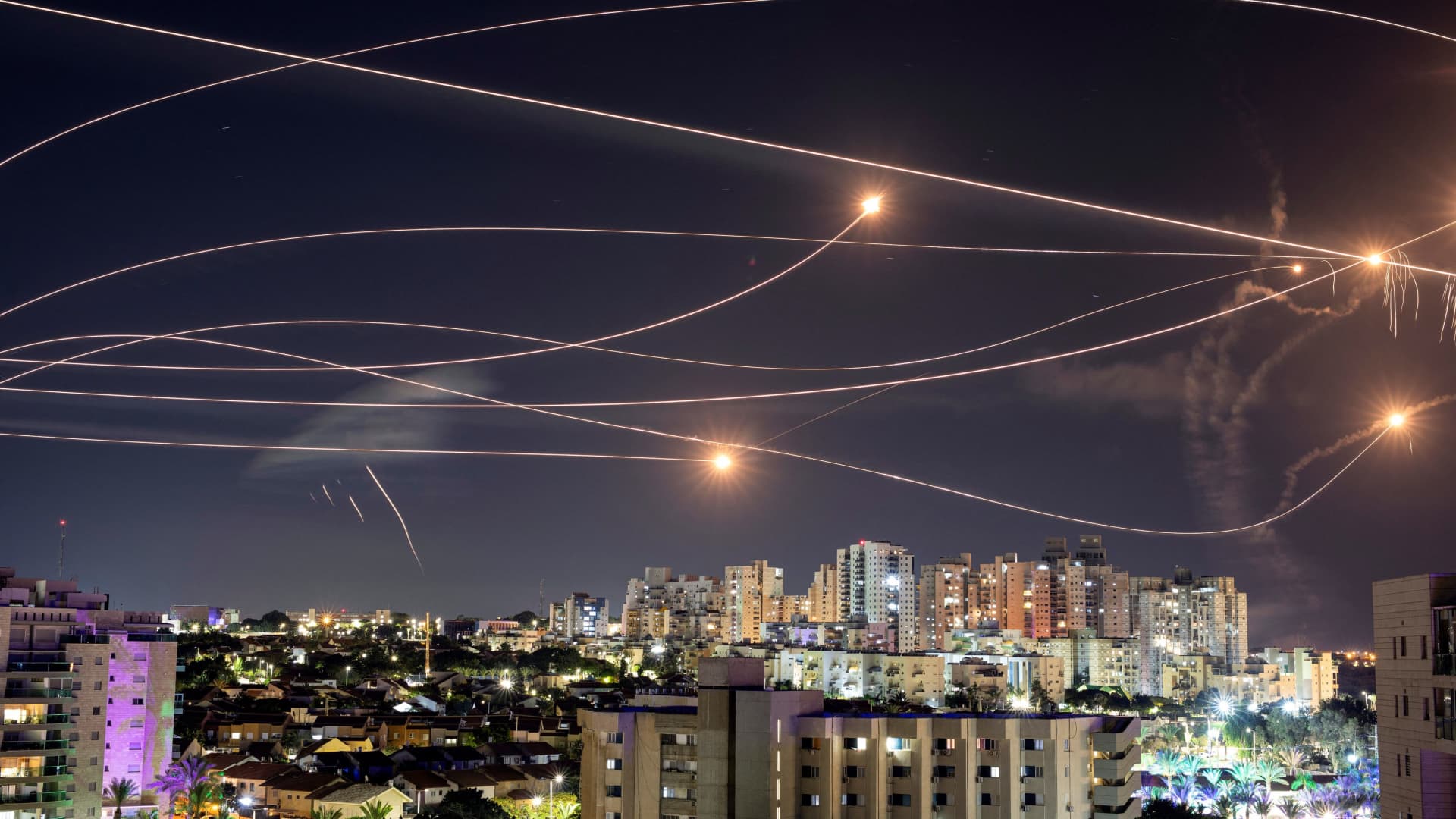On Thursday morning, Hezbollah said it launched 200 rockets into Israel — one of its largest attacks yet — following the Israeli assassination of one of the group’s senior commanders, further ramping up fears over a potential full-blown war between the two heavily armed adversaries.
The Iran-backed Lebanese militant group, which is designated as a terrorist organization by the U.S. and U.K., said it fired at 10 Israeli military sites using a “squadron of drones.” Israel’s military said that “numerous projectiles and suspicious aerial targets” breached its territory, many of which were intercepted, and that there were no casualties.
Hezbollah has launched thousands of rockets into Israel in the nearly nine months since the latter began its war against Palestinian militant group Hamas in Gaza on Oct. 7. The rockets fired from Lebanon have killed 18 Israeli soldiers and 10 civilians, Israel says, while Israeli shelling has killed some 300 Hezbollah fighters in Lebanon and around 80 civilians, according to a Reuters tally.
The relatively low number of Israeli casualties is thanks to the country’s Iron Dome, a mobile all-weather defense system designed to protect Israeli territory by launching guided missiles to intercept incoming rockets and other short-range threats in midair. It has a success rate of around 90%, according to the Israel Defense Forces.
The system, which became fully operational in March 2011 and has been upgraded several times since, has “successfully prevented countless rockets from hitting Israeli communities,” Israel’s Defense Ministry says. Originally produced in Israel, the Iron Dome was developed by state-owned Rafael Advanced Defense Systems with U.S. backing — and Washington continues to provide funding for it today.
The Iron Dome also intercepts around 90% of the near-daily rocket attacks from Hamas and other militant groups in Gaza, the IDF claims. Israel’s war in Gaza has killed more than 37,000 people in the besieged strip, according to Palestinian health authorities, in a bloody offensive triggered by Hamas’ terror attack on Oct. 7 that killed roughly 1,200 people in Israel and took an additional 253 hostage, 116 of whom have been freed.
But as Israel faces the prospect of a two-front war — with Hamas to its south and Hezbollah to its north — and with the reality that Hezbollah has an enormous arsenal of missiles and is estimated to have 10 times the military capability of Hamas, the question is: can the Iron Dome be overrun?
An all-out war between Israel and Hezbollah would be devastating for both sides. Already, at least 150,000 residents of southern Lebanon and northern Israel have been evacuated from their homes and are internally displaced because of the regular cross-border fire.
Retired Israel Defense Forces Col. Miri Eisin, who directs the International Institute for Counterterrorism in Israel, said the Iron Dome would not be overrun in the sense of failing to work altogether; rather, its interception success rate will likely fall amid large-scale missile attacks, meaning more damage to Israeli infrastructure and more casualties.
“Our capabilities to intercept are very high. But the percentage will go down and that means that they will be able to hit and do damage in the heart of Israel,” Eisin said, adding that could include vital infrastructure like power plants and the country’s Tel Aviv international airport.
Hezbollah “has payloads that Hamas could not dream of,” she said. “I would say that there’s an expectation of hundreds of killed, of thousands of casualties, and of a very challenging time period at the local level.”
The Lebanese Shiite organization, which was born in 1982 during Israel’s occupation of southern Lebanon with funding from Iran, is now considered one of the most heavily armed nonstate groups in the world.
“Most estimates credibly put Hizbullah’s missile and rocket stockpile at 150,000,” Victor Tricaud, a senior analyst at consulting firm Control Risks, told CNBC. Hamas’ rockets and missiles, by comparison, are estimated to number in the tens of thousands.
More significantly, Tricaud said, Hezbollah has far more advanced weapons systems than Hamas, including Iranian-supplied guided Fateh missiles as well as drones.
“Such munitions would stand significantly greater chances to evade Israel’s air defense systems … and would be likely to inflict significant damage to critical economic infrastructure across Israel,” he said.
A full-blown war would also be highly destructive for Lebanon, which is in the midst of an economic and political crisis and whose infrastructure is wholly unprepared for a new war. A major Israeli incursion and the damage it would bring, particularly to the Hezbollah stronghold of southern Lebanon, could threaten the group’s standing and support there.
Israel and Hezbollah went to war in 2006, in a 34-day conflict that was claimed as a victory by Hezbollah and seen as a strategic failure in Israel.
A report by Israel’s Reichman University titled “Fire and blood: The chilling reality facing Israel in a war with Hezbollah” outlined a scenario in which Hezbollah would fire 2,500 to 3,000 missiles and rockets a day for several weeks targeting Israeli military and civilian sites. For reference, Hezbollah fired an estimated 4,000 rockets at Israel over the course of the entire 2006 war.
According to Phillip Smyth, an expert on Iranian proxies and former senior fellow at the Washington Institute, Hezbollah’s rates of fire and number of rockets launched are already “far outpacing” what was seen during the 2006 war.
Hezbollah “has demonstrated a domestic production capacity for short-range, more inaccurate rockets that could be used to overwhelm the Iron Dome,” he said. Those, combined with the group’s newer higher-accuracy missiles and growing supply of suicide drones, “could cause a much more dangerous issue for the Israelis than in 2006,” he said.
“Increased accuracy for these weapons systems is a big issue,” Smyth warned. “I’m of the belief that Iron Dome can handle many of the intermediate-range missiles. These are likely fewer in number, but combined with the accuracy shown with some UAV attacks, there could be a hell of a lot more damage.”
— CNBC’s Sam Meredith contributed to this report.





